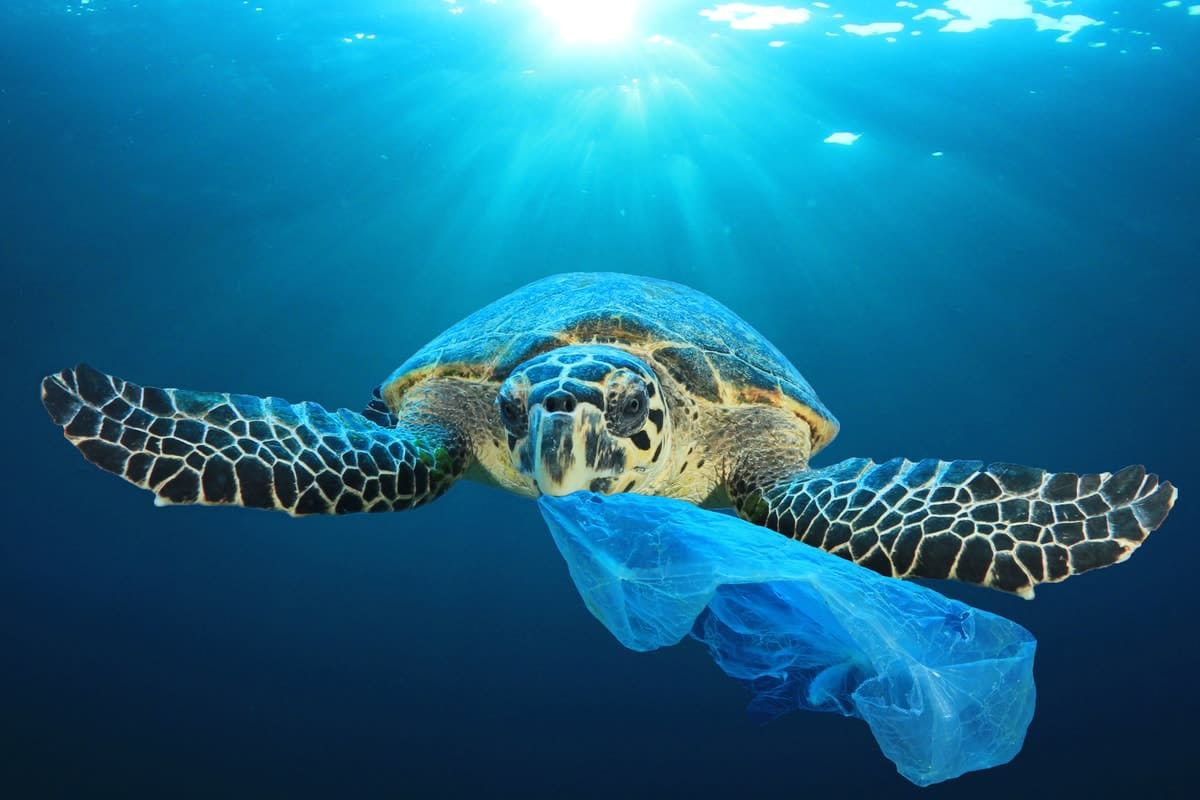
Plastic pollution is a global environmental problem, and most Australian states are taking action by banning different types of single-use plastics over the next few years.
While this is a good start, previous research has shown that bans are more effective when consumers are also encouraged to change their behaviour. And our recent (open-access) research shows that the way we talk about the problem with plastics can help (or hinder) behaviour change efforts.
Framing the problem
When we talk about an environmental problem like plastic pollution, it can be tempting to highlight the scale or size of the issue – such as the fact that a garbage truck’s worth of plastic is dumped into the ocean every minute.
While such messaging can draw attention to the issue and create a sense of urgency, such statistics also send subtle information about others’ opinions and behaviours – known as social norms.
We know from previous research that our own intentions to avoid single-use plastics are influenced by our beliefs about social norms (alongside factors such as perceived benefits).
If we believe others are avoiding single-use plastics (and that plastic avoidance is beneficial), we’re more likely to avoid plastic, too. However, if we’re alerted to how many others are still using single-use plastics, it can make the problem behaviour seem common and normal.
Mass media and social media are full of information about social norms related to single-use plastics – such as the scale of the problem, expressions of approval and disapproval of avoidance, and accounts of how many others have switched to reusable alternatives.
For example, in response to the 2018 supermarket plastic bag bans, news media often focused on consumers who were complaining about the bans and struggling to adjust, whereas social media commenters expressed approval of the bans and disapproval of complaining.
Behavioural science research shows that information about social norms can have intended and unintended influences on our behaviour.
Which raised the question: Depending on how the problem is framed, if people were incidentally exposed to content about single-use plastics, could it change their perceptions? And, if so, would it be helpful or harmful to behaviour-change objectives?
People respond differently depending on how the problem is framed
To answer this question, we conducted an online experiment to see if people’s perceptions or behaviours changed after viewing one of four short “social media-friendly” video clips about single-use plastics.
Two clips focused on the scale of the problem (the global volume of plastic waste generation featuring a landfill filled with plastic waste, and how much single-use plastic waste Australians generate every minute in the shape of a giant “plastic footprint”). We anticipated these clips could negatively influence social norm perceptions by presenting plastic use as common.
The other two clips (an albatross that had died from eating plastic debris, and a baby bird being encouraged by scientists to regurgitate pieces of plastic) focused on the impact plastic has on wildlife. We anticipated these clips could positively influence perceptions about the benefits of avoidance by directly linking plastic to negative environmental outcomes.

We deliberately chose video clips that were circulating on social media – for example, the clip of the baby bird regurgitating plastic has been viewed 30 million times since May 2019.
Such content has the potential to reach millions of viewers who are not necessarily seeking out environmental content.
First, we looked for patterns of behaviour to determine if there were different types of plastic consumers. Our analysis indicated there were only two types – “plastic avoiders” and “plastic users”.
People were more likely to be “avoiders” if they were older, confident in their ability to avoid plastic, believed that others avoid plastic often and disapprove of using plastic, and believed that plastic avoidance was beneficial.
People were more likely to be “users” if they were younger, working, believed that avoiding plastic would be expensive, and (surprisingly) if they identified as a “plastic avoider”.
Read more: Social media, social norms, and the question of plastic bags
Next, we looked at how each group responded to the different video clips.
One month after the experiment, “avoiders” who saw the video featuring a landfill filled with plastic believed others were avoiding single-use plastics less often (social norms) than they did before they saw the clip. This highlights the potential unintended consequences of focusing on the scale of a problem, by making undesirable behaviours seem common and normal.
However, “users” who saw either of the impact-focused clips (the albatross or the baby bird regurgitating plastic) intended to avoid single-use plastics more often immediately after watching the clips. And, more importantly, they reported actually changing their behaviour by avoiding plastic more often one month later.
The way we talk about problems matters
The way we talk about and frame problems in the media matters. For years, there’s been a practice of drawing attention to the scale of the problem to raise awareness and concern, in the hope this will change people’s behaviour.
But the behavioural sciences are littered with lingering questions and examples that this approach can do more harm than good by normalising undesirable behaviours.
Our research lends support to this concern, highlighting how different audiences respond depending on how problems are framed.
Read more: All at sea? A global plastics treaty is needed to fill the gaps in the existing conventions
In our quest to avoid single-use plastics in society, our research shows that we need to shift the conversation away from the scale of the problem.
The good news is that environmental communicators seeking to promote plastic avoidance among “plastic users” could promote the impact-focused clips on social media as a cost-effective way of increasing public impact and normalising avoidance.





